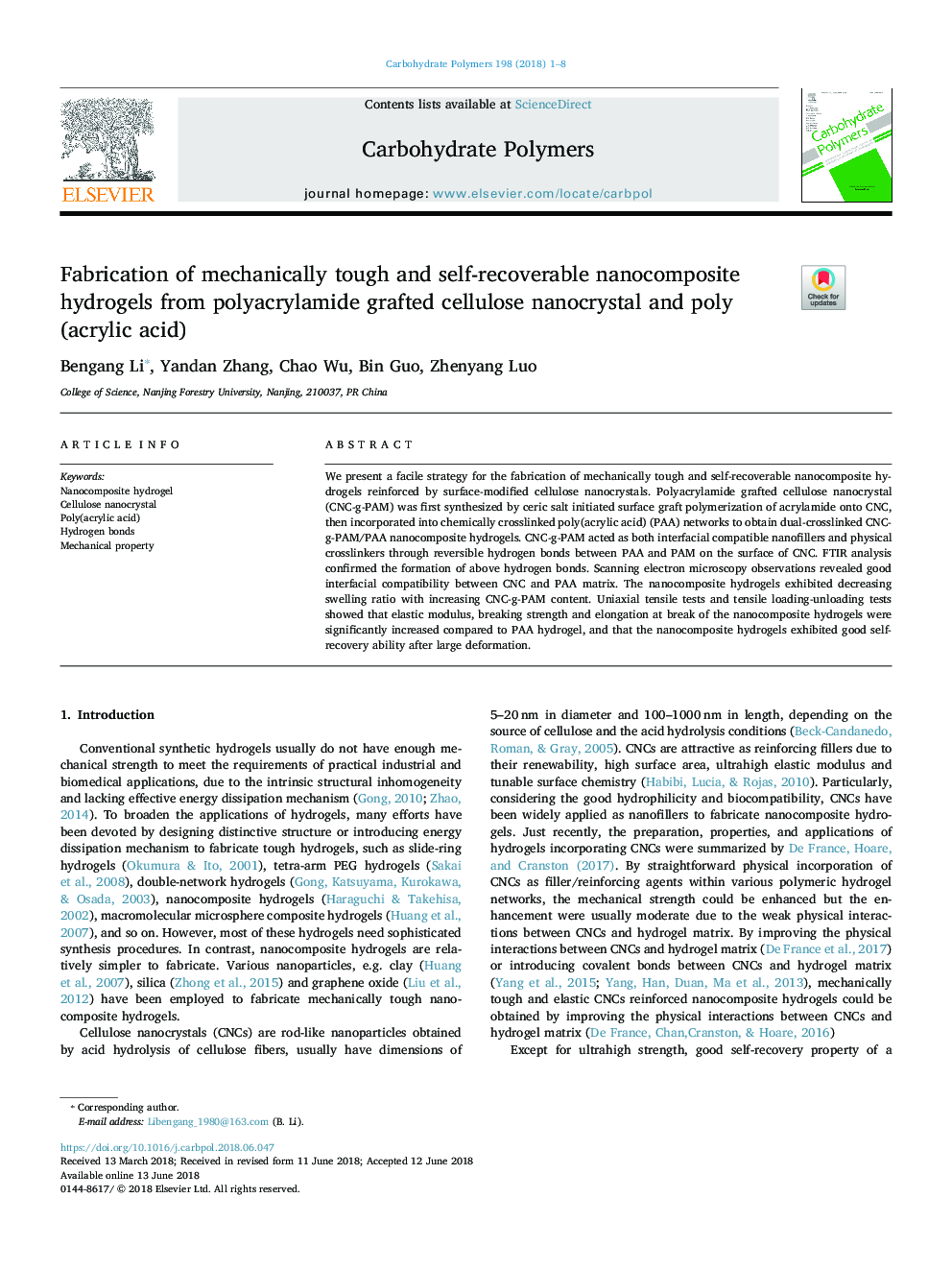| Article ID | Journal | Published Year | Pages | File Type |
|---|---|---|---|---|
| 7781259 | Carbohydrate Polymers | 2018 | 8 Pages |
Abstract
We present a facile strategy for the fabrication of mechanically tough and self-recoverable nanocomposite hydrogels reinforced by surface-modified cellulose nanocrystals. Polyacrylamide grafted cellulose nanocrystal (CNC-g-PAM) was first synthesized by ceric salt initiated surface graft polymerization of acrylamide onto CNC, then incorporated into chemically crosslinked poly(acrylic acid) (PAA) networks to obtain dual-crosslinked CNC-g-PAM/PAA nanocomposite hydrogels. CNC-g-PAM acted as both interfacial compatible nanofillers and physical crosslinkers through reversible hydrogen bonds between PAA and PAM on the surface of CNC. FTIR analysis confirmed the formation of above hydrogen bonds. Scanning electron microscopy observations revealed good interfacial compatibility between CNC and PAA matrix. The nanocomposite hydrogels exhibited decreasing swelling ratio with increasing CNC-g-PAM content. Uniaxial tensile tests and tensile loading-unloading tests showed that elastic modulus, breaking strength and elongation at break of the nanocomposite hydrogels were significantly increased compared to PAA hydrogel, and that the nanocomposite hydrogels exhibited good self-recovery ability after large deformation.
Keywords
Related Topics
Physical Sciences and Engineering
Chemistry
Organic Chemistry
Authors
Bengang Li, Yandan Zhang, Chao Wu, Bin Guo, Zhenyang Luo,
